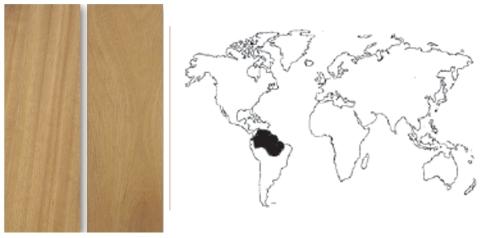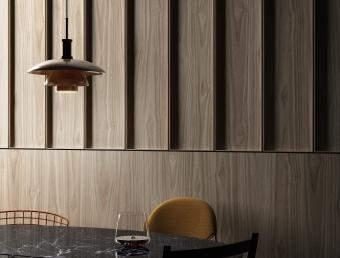Tatajuba
Scientific name:
Bagassa guianensis Aubl.; B. tiliaefolia R. Ben.
Geographic origin:
South America
- Sapwood: cream-coloured.
- Heartwood: yellow to dark brown with the light effects.
- Fiber: Straight, generally intertwined.
- Grain: medium size to rough.
- Characteristic defects: Growth tensions

a
b
c
d
e
f
g
h
i
j
k
l
m
n
o
p
q
r
s
t
u
v
w
x
y
z
Capacity of being impregnated
- Sapwood: Medium capacity of being impregnated
- Heartwood: Low capacity of being impregnated
Mechanical properties
- Resistance to static flexion 1,350 kg/cm2
- Elasticity module 180,000 kg/cm2
- Resistance to compression 780 kg/cm2
Mechanization
- Sawing process: ordinary difficulties arise from hardness and the possible irritations produced by its powder. Risk of deformations due to internal tensions that produce radial quartering despieces radiales.
- Drying process: Medium to high speed. Low risk of deformation and crack formation.
- Planing process: Difficulties arise from hardness and risk of repelling on pieces of intertwined fibers. Slow mechanisation is recommended
- Gluing process: No difficulties.
- Nailing and screwing process: pre-drilling is recommended due to hardness.
- Finish: No particular difficulties arise
Physical properties
- Apparent density at 12% humidity 795 kg/m3 heavy wood
- Dimensional stability
- - Volumetric contraction coefficient 0.35 % stable wood.
- - Relation between contractions 1.45% no tendency to deformity
- Hardness (Chaláis-Meudon) 6.5 hardwood
Observations
Tatajuba



